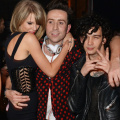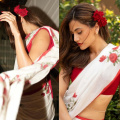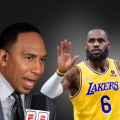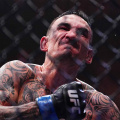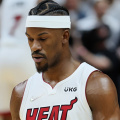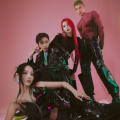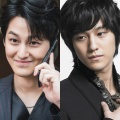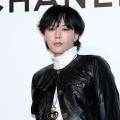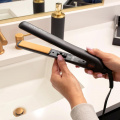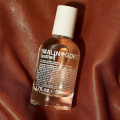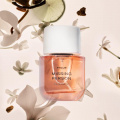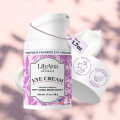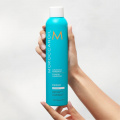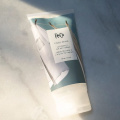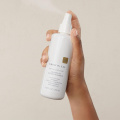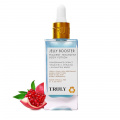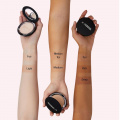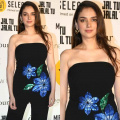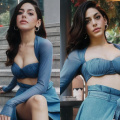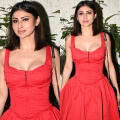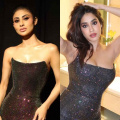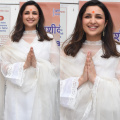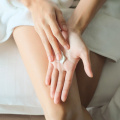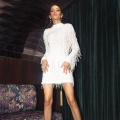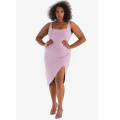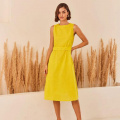How to identify and maintain curly hair types
The beauty of curly hair types is that it is full of life with interesting textures and gorgeous curls. But for most of us, it gets hard to identify if we have curly hair types or if it’s just frizzy.
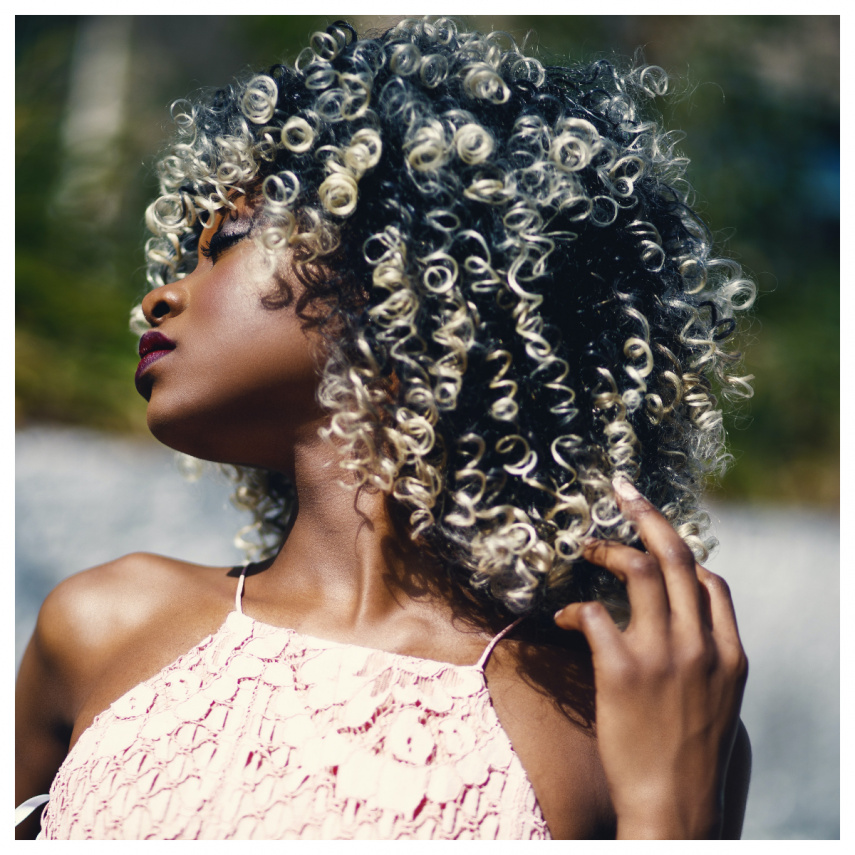
It's simple to determine if you have straight hair, but it's far more difficult to determine whether you have a wavy or curl types texture. According to the consensus, hair can be divided into four major types: straight, wavy, curly, and coily or kinky.
To help us understand the physics underlying curl types development and learn how to best care for your particular type of spiral, whether it's wavy (type 2), curly (type 3), or coily (type 4), we have mentioned below the curly hair types. Regardless of the shape of your hair, this is the secret to having beautiful, healthy hair!
But don't worry if that's not really your thing. Because of the curls, the road to knowing and embracing your texture may be windy, but it need not be difficult. Even if it isn't ideal, many individuals have discovered that this particular set of instructions can be quite helpful in at least assist you in identifying your curl types so you know where to start when you're shopping for hair-care products.

You should, at the very least, be able to enter a store knowing roughly what you're searching for to treat your priceless crown and knowing the general guidelines for the greatest hairstyles. You can easily master curl typing by following the simple advice given below:
Why is my curly hair types?

The shape of the hair follicle itself determines the type of hair, which ranges from pin-straight to kinky. According to Rolanda Wilkerson, Senior Scientific Communication Manager at Procter & Gamble, "The structure of our hair follicles and the way the hair emerges from the follicle is a big influence in the degree of the hair curl types, its shape, and ultimately what we define as texture."
Similar to the hair strand, the follicle can come in a variety of sizes and shapes. Round follicles produce straight hair, whilst oval and twisted oval follicles produce wavy and curly hair types. The size of the follicle also affects hair thickness since thicker hair strands have greater growth zones.
That's not all, though. Your hair's chemical connections also play a role in the pattern of your curl types. Cysteine, an amino acid that contains sulfur, is the main component of hair, according to Wilkerson. The cysteine groups are dispersed in naturally straight hair so they cannot interact.
Since they are closer and more likely to join together in hair that is wavy or types of curly hair, they increase the tension in the hair fiber and aid in curling. Wilkerson emphasizes that both the hair follicle and the hair fiber cooperate to produce a curl: "The more curled the hair follicle, the more compressed the cysteine, the more bonds form, and the curlier the hair."
How to identify your curly hair types?

Scientists have tried to categorize curliness over the years by evaluating several aspects of hair fiber. The L'Oréal Institute for Ethnic Hair and Skin Research conducted one of the most widely cited studies, classifying hair shapes into eight categories after examining 2,449 participants from 22 nations and five continents.
The scientist developed a technique for classifying curly hair types from 1-4 by measuring curl diameter, curl index (the ratio of the stretched length of the hair to its length at rest), and counting waves and twists in each participant's hair. According to Wilkerson, "the higher the number, the curlier the hair and the tighter the coil."
Finding the curl types that most closely resemble your own is easy with the help of this guide (note that this list omits type 1, as it refers to straight hair). You might want to sacrifice a few hair strands by pulling them out of your head while it's still wet to find out. As they air dry, place them flat against a white surface and watch as they assume their original shape. Given that not all hair has the same kind of curl all the time, you might be able to recognize a few different patterns.
Type 2: Wavy Hair

Natural waves are a feature of type 2 hair, and they can range from hardly perceptible to seeming curled. When damp, curly hair types is typically straight; when it dries, it becomes wavy. Its inability to create swirls or twists that wrap around one another sets it apart from types of curly hair. Apply your style products sparingly and with a delicate touch to ensure that your wavy hair is well nourished and has just the right amount of volume to move around freely.

The tip of type 2A hair creases after growing straight at the crown. Wave patterns deviate a little from straight lines.
This wave style is simple to comb and needs little styling. When dried in the air, the waves naturally develop. Look for shampoos and conditioners that provide a little volume rather than making your hair limp.
Apply a light mousse to stimulate your roots and stay away from thick creams that can flatten the curl by weighting it down to balance the movement of waves with straighter hair at the crown. This hair type is ideal for Matrix Biolage Styling Whipped Volume Mousse, one of the top performers from the GH Beauty Lab's hair mousse test.

Although type 2B hair grows straight, the crown begins to develop medium to big S-shaped waves (think beach waves).
Use gentle shampoo and conditioner formulations to protect waves from tangling and to maintain their bouncy structure. Lightly formulated leave-in conditioners that coat the strands on humid days might give additional protection and preserve the waves because this type is typically frizzier than Type 2A.

Small to medium waves that gradually expand into the shape of the letter S are typically classified as type 2C curly hair. This style straddles the line between curly and wavy hair. Despite the fact that to some this hair may already appear to be typically curly hair types, the 2C curly hair type lacks springs, which separate curls from waves.
The most frizz-prone hair type is 2C curly hair. It might be challenging to manage volume and frizz, but leave-in conditioners and hair serums have shown to be wonderful solutions.
Type 3: Curly Hair

This category includes hairstyles with spring-like and corkscrew-like curls. Curls typically resemble waves when hair is wet, but as they dry, they take on the appearance of three-dimensional swirls. With this hair type, every strand could be different. Look for products that have been specially designed to tame frizz and enhance curls. This group includes wavy and coily hair the most frequently, as well as varied hair kinds (fine, medium, or thick).
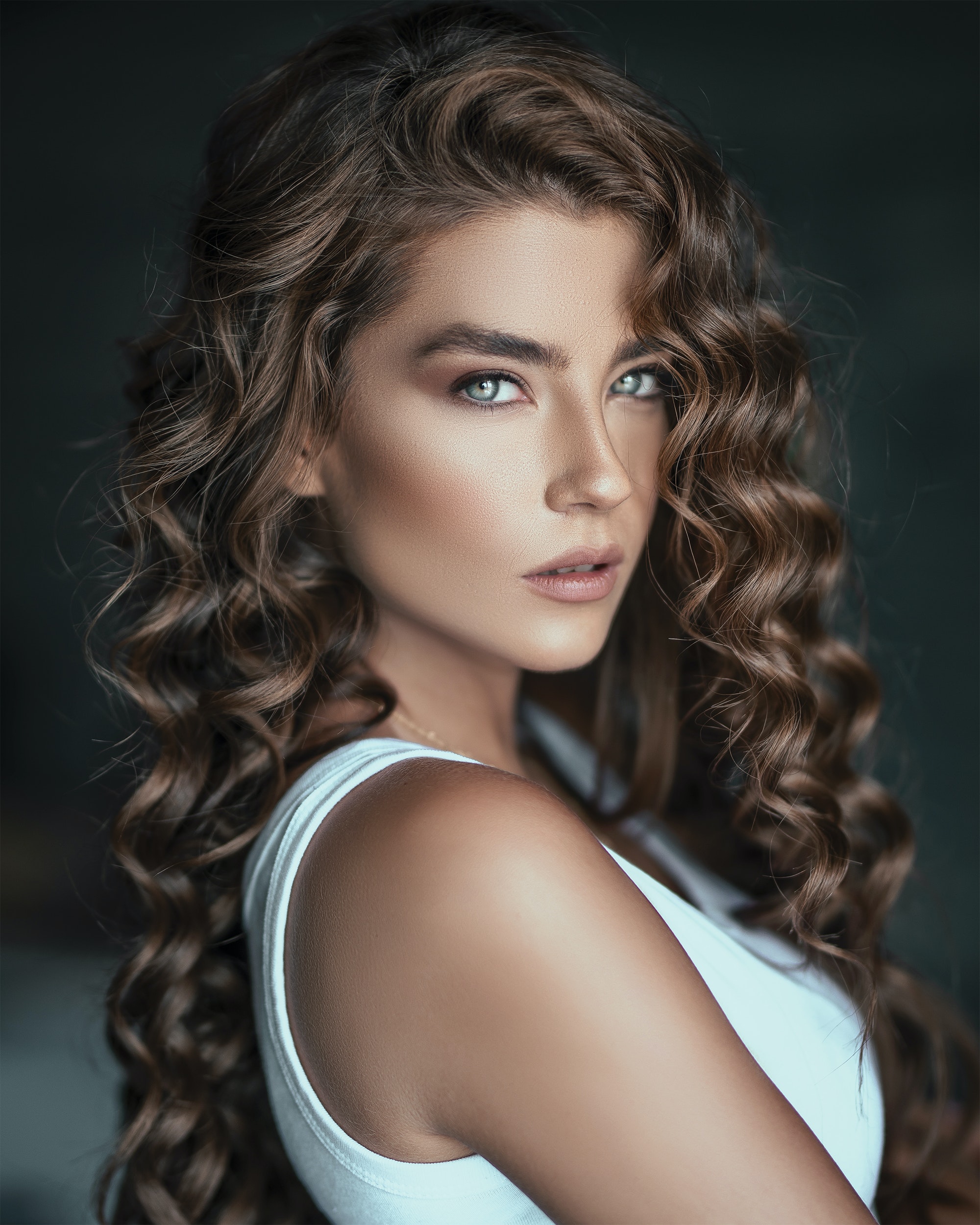
3A curly hair types roll down from the crown in stretched spirals with a big diameter. This hair has thick, gentle curls that are typically not coarse to the touch, and the springs are lively and full of life even when the hair is only lightly groomed.
With the correct products, 3A curly hair is among the most manageable curly hair types and may not even need many styles. To manage strands when style and drying, look for light styling lotions.
To get your desired look, even though this curl type may be straightened with a flat iron or a blow-dry brush, be prepared to put in a little extra work. Try using a blow-dry brush, which has been shown to create volume while producing a smooth blowout.

The medium-sized, clearly defined springs of Type 3B curly hair resemble corkscrews.
For this sort of curl, there's no need to add more volume because the spirals' interaction with one another fills the hair out. However, 3B curly hair is prone to breakage and frizz. The condition of your curls is also affected by how you dry your hair. Drying using a cotton t-shirt is advised because conventional cotton towels can be too harsh and damage hair.
Using hair oils and serums that prevent frizz and add shine may be sufficient to maintain the luscious appearance of 3B curly hair.

Compared to type 3B hair, type 3C curly hair contains smaller, more compact springs that can range from well-defined to loose helixes.
It's vital to use a detangling comb on curls from tip to root rather than root to tip as most people do to assist minimize damage. Use gentle shampoos like cleaning conditioners (also known as co-washes), which clean and nourish simultaneously with higher ratios of conditioning chemicals, to keep these curls full and smooth.
In general, hair gels can prevent frizz and hold this type of curl in place. We advise using alcohol-free gel with jojoba and coconut oils to enhance natural curls.
Type 4: Coily/Kinky Hair

This hair type can have tightly wound s-shaped curls or a compact zigzag pattern that doesn't twist around itself. It can combine the two shapes as well. Give it a closer look while your hair is wet and dried to see if you have type 4 curls because they can contract when dry.

Small but characteristically S-shaped strands arranged in coiled, tight rings characterize curl type 4A.
Use hydrating shampoos and conditioners, and gently pat your hair dry without pressing it too much to reduce any damage. The best amount of conditioning was achieved with coconut milk shampoo and conditioner.
To keep ringlets soft to the touch and shielded from moisture, this type of hair will also benefit from extra nourishment from hair creams and oils.

Small, zigzagged patterns, along with compressed and s-shaped coils, are what define Type 4B.
This hair type is suitable for many various hairstyles and can use a range of products, from mild to luxurious. However, it's important to condition the curl both in and after the shower. Use gentle shampoos and conditioners, such as coconut shampoo and conditioner, to cleanse and hydrate your curls.
When 4B curls are wet, they are most susceptible, so condition your hair properly before styling. Consider using a rich leave-in conditioner designed specifically for coily and densely textured strands that may be applied to damp or dry hair.

Type 4C tightly coiled strands have an extremely tight zig-zag shape that is occasionally indiscernible to the eye and are more brittle than any other design.
The most fragile hair type is this one, so continuous moisturizing is essential. At least once a week, give your hair deep conditioning treatment and hot oil treatment. To lock in moisture on hair strands and give the scalp a small tingling feeling, use coconut, castor, or almond oil after using products to lessen dry scalp and hair. It can also be applied as a hot oil treatment.
To ensure that hair oils are applied evenly, untangle and separate your hair with your fingers before applying them. Additionally, we advise using a silk pillowcase or wearing a hair bonnet for further protection. This helps hair retain hydration for healthier curls.
How to care for the different curly hair types?
It's time to decide which products are best for your curls now that you know the types of curls you have. Learn how to moisturize curly hair types no matter what type of curls you have for the best shape and bounce. No matter what type of curl pattern you have, our Curl Collection is made to help you embrace it. Our aim at Living Proof is to let your natural hair show off its best features. We achieve this by fortifying each hair strand from root to tip using premium products. Our products can support every types of curly hair you may have. Although many of the products, including the Moisturizing Shine Oil, Curl Shampoo, and Curl Conditioner, are made with all sorts of curls in mind, there are a few style products in the collection that are made specifically for each types of curly hair:
Wavy

For wavy curls to keep their shape, more lightweight styling products are required. For delightfully soft, lustrous waves, our Curl Enhancer is a lightweight conditioning styler that enhances natural texture and guards against frizz. If you're wondering how to diffuse types of curly hair and prevent frizz, this method is especially ideal.
Curly
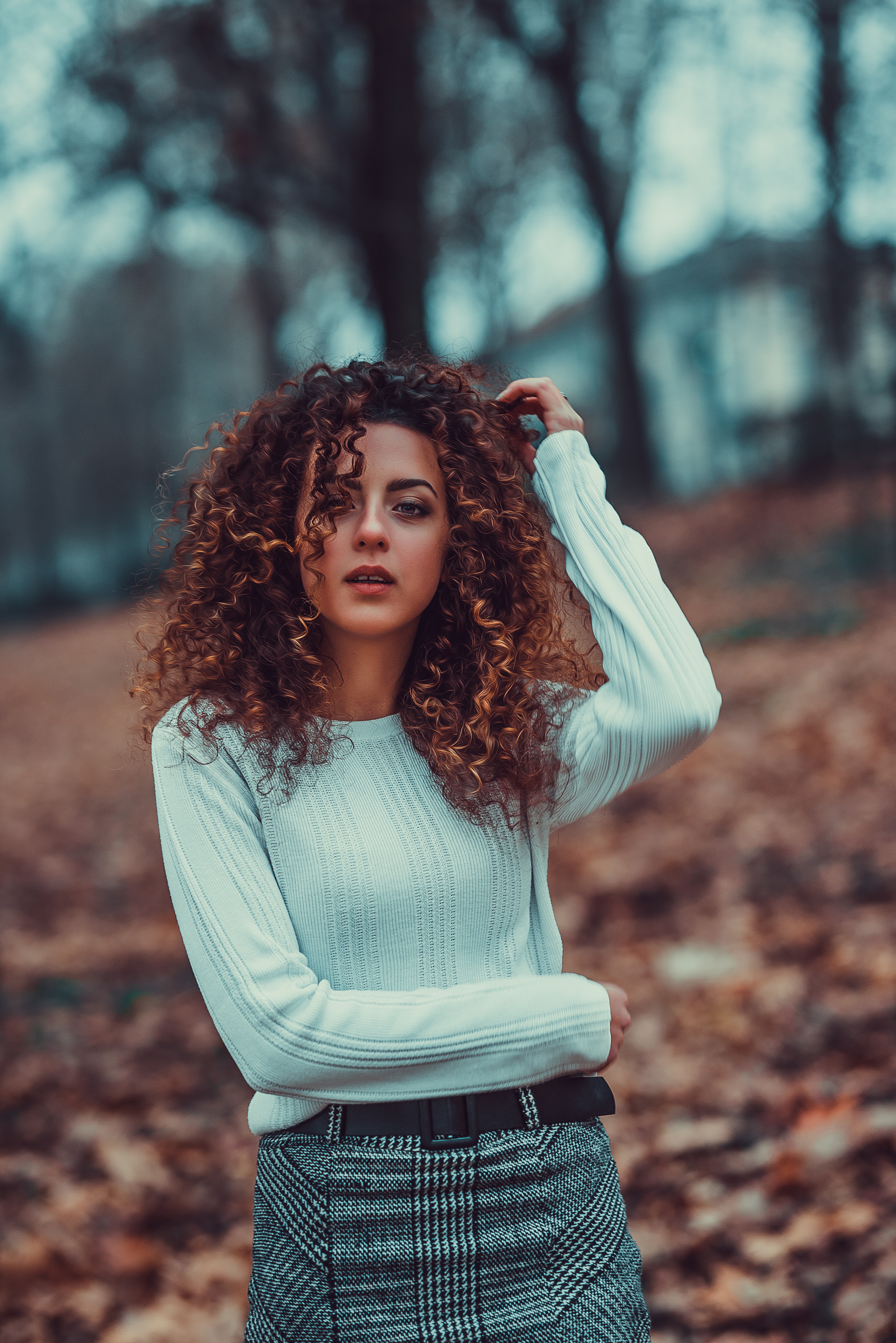
For types of curly hair to maintain its structure and consistency, styling products with moisture throughout are necessary. For bouncy, lustrous, frizz-free curls, use our Curl Definer conditioning styler, which defines and moisturizes curls from root to tip.
Coily

Deep hydration is necessary for coily curls to maintain definition and gloss. For soft, lustrous, frizz-free curls that don't shrink, use our Curl Elongator, an elongating conditioning styler that defines and detangles even the tightest coils.
Depending on your hair type, curl pattern, and the desired outcome, you can also mix, match, and combine different hair stylers. To help you achieve strong, gorgeous curl types, these products were made to complement one another.
Your curl types need attention, regardless of whether you have type 3c curly hair, 3b curly hair, 4a hair, or another type. You can choose the finest products, treatments, and styling methods for your curl types by understanding the types of curly hair you have. Find the ideal hair products for your lovely curls online, including shampoo, conditioner, style cream, and more!
Be proud of your curls because they give you character. No matter your hair type or curl types, whether you have loose curls or tight coils, you can find the correct products for your curls. Because there are several types of curly hair, you could not precisely fit into one category or subcategory. It's entirely acceptable to have several various sorts of curls; it's what makes our hair special.
ALSO READ: Hair products and tools to manage your curly hair in a trouble free way





 JOIN OUR WHATSAPP CHANNEL
JOIN OUR WHATSAPP CHANNEL
